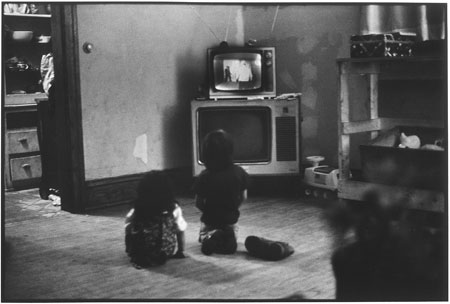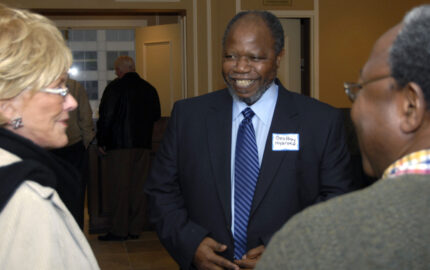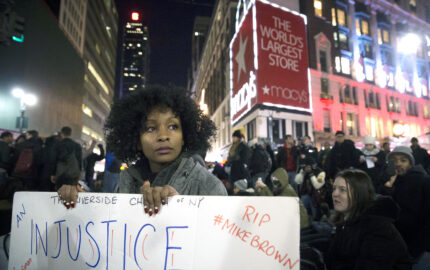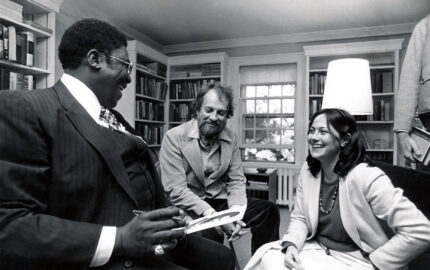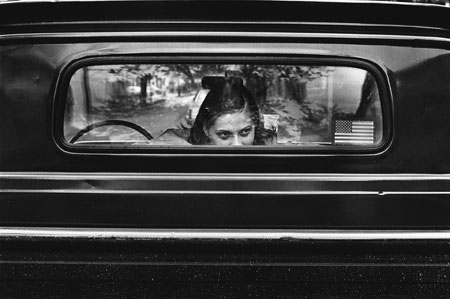
The following are excerpts from the forward by John G. Morris and introductions to “McClellan Street” by David Turnley (NF ’98) and Peter Turnley (NF ’01). The three-block long street, which is now mostly destroyed, was in Fort Wayne, Indiana. The book was published in 2007 by the Indiana University Press.
“These photographs of McClellan Street by David and Peter Turnley, taken in 1972-1973, help us understand how America came to be the country that it is today. … It was a time of war, the war in Vietnam, a war America came to regret. Some men of McClellan Street fought there. Their children have grown into the adults who, with their children, face yet another unwanted war.

“With its rundown sidewalks and shabby houses, McClellan Street was never America the Beautiful. The photographs are not pretty, in the conventional sense. The street’s residents are not chic or stylish; many go barefoot. But they are beautiful members of the Family of Man. It was a friendly neighborhood, its residents enjoying life’s daily joys, sharing sadness, good weather and bad. It was for those reasons that the Turnley twins felt at home there and made it their own neighborhood. Their subjects became their friends, proudly displaying Turnley pictures of themselves. This is the street’s family album.… Though the street itself is now an extended parking lot, its spirit, and the spirit of those times, lives on in this book.” —John G. Morris

“Nineteen seventy-three was a time, as anyone alive with an honest memory would remember, of monumental change accompanied by great tumult in American life. … It was also, as I remember it, a time of tension, but of a tension that seemed to be ultimately a force for much creativity.

“… I grew up in Fort Wayne and discovered [McClellan Street] one summer day in 1973, as my twin brother, David, and I searched for an elderly man who had been in one of our photographs that had won a prize in a Scholastic photography contest. The only way to receive the prize itself was to get a model release from the man featured in the image. I recall being struck immediately by a special sense of community on this hard working-class street where every house had a porch and people yelled back and forth. Adults and children played games together on the sidewalk and in the middle of the street. People lived, laughed, and argued out loud, amongst each other.
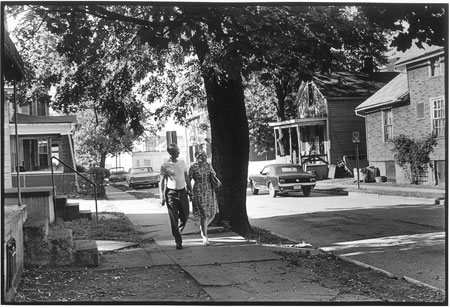
“On that day in 1973, my brother and I decided to photograph the life we found on McClellan Street over the course of most of a year. … In the beginning, David and I shared one camera; one would use it, while the other would sit on a porch and speak to people on the street, and play with, or babysit, their children. Later, we would acquire a second camera so both of us could take pictures at the same time.

“In the evenings and on weekends, we would come home and develop our films and make prints in our basement darkroom…. We liked going to McClellan Street, not because the people there were subjects of some sort of study, but because we … felt lucky to be around the people of McClellan Street, who offered us kinship and camaraderie. Their zest and spirit, in the face of their often tremendous economic struggles, opened our eyes and offered us inspiration and a sense of direction and a road map for approaching life.…” —Peter Turnley

“At the tail end of the late sixties, a generation was in the streets protesting the war in Vietnam. My sense of the world was of one in turmoil, but one with tremendous idealism. …The McClellan Street project happened at this formative time of our lives when Peter and I were 17 years old. We are twins and followed an older brother and sister in a family who sat at the dinner table every night, with our parents and our paternal grandmother and great aunt who lived across the street. While growing up in Fort Wayne … our family was actively engaged in discussion of the national and world affairs of our time.
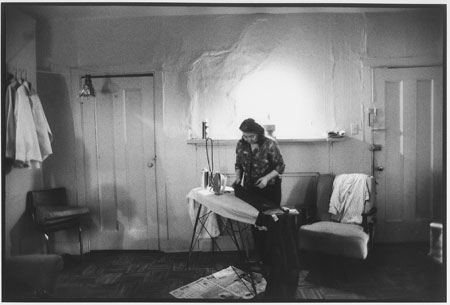
“… I think that what struck [Peter and me] immediately with the camera was that so much in the world seemed to not make sense. While having been taught that we are all created equal, our city’s neighborhoods were mostly racially and economically divided, with the working-class poor living mostly in the inner city, and the mostly white, middle and upper classes living on the suburban edge of town.

“I think that through photography we realized we had the ability to document what is equal—dignity, the human spirit—which has nothing to do with race, religion, ethnicity, or economic status. The camera gave us a voice with which to scream, an outlet for our creativity, and a window into a world filled with possibility and adventure.…” —David Turnley
